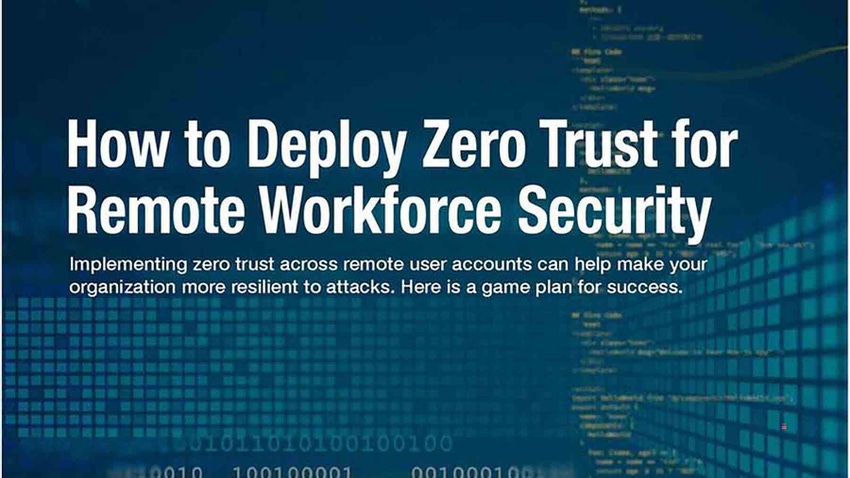
Cybersecurity In-Depth: Feature articles on security strategy, latest trends, and people to know.
Securing Remote Workers Through Zero Trust
Dark Reading's special report looks at how enterprises are turning to zero trust to harden the security of their remote workforce. The challenges are steep.
November 7, 2023

The idea of zero trust in the enterprise has shifted in recent years from mostly theoretical to actual implementation. It makes sense, after all, as security teams improve and fortify the security defenses rolled out during the hurried shift to remote work. Many organizations are turning to zero-tier models, where every attempt is verified before granting access.
Dark Reading's special report "How to Deploy Zero Trust for Remote Workforce Security" digs into how security teams can improve and fortify the security defenses protecting users working remotely. Verifying identity behind each connection attempt is necessary because the goal of zero trust is to make sure the device is secure and identity is authentic.
Enterprises must get remote security right. Whether they're attempting to access networks and applications from any connected device from home, a coffee shop, or a picnic bench by the lake, remote workers are vulnerable because they're detached from traditional security defenses. Enterprise security teams often have no visibility into how secure those devices and networks are. Is this really a known and trusted developer trying to access the development pipeline? Is this someone masquerading as that developer?
But the path to zero trust is difficult. According to research firm Gartner, less than 1% of enterprises have a measurable zero-trust program in place currently; by 2026 the firm predicts that number will reach 10%.
"The good news is that zero trust was fundamentally designed to support remote work," says Alex Bovee, co-founder and CEO of identity and governance platform ConductorOne. "When designing a zero-trust strategy for remote workers, the main objective is to embed ['never trust, always verify'] principles of access control, consequently establishing a robust security posture for remote employees."
Read Dark Reading's "How to Deploy Zero Trust for Remote Workforce Security" for the game plans that security teams need in order to deploy zero trust for remote users. The goal is to help individuals get the access they need, quickly, securely, and efficiently.
About the Author(s)
You May Also Like
Beyond Spam Filters and Firewalls: Preventing Business Email Compromises in the Modern Enterprise
April 30, 2024Key Findings from the State of AppSec Report 2024
May 7, 2024Is AI Identifying Threats to Your Network?
May 14, 2024Where and Why Threat Intelligence Makes Sense for Your Enterprise Security Strategy
May 15, 2024Safeguarding Political Campaigns: Defending Against Mass Phishing Attacks
May 16, 2024
Black Hat USA - August 3-8 - Learn More
August 3, 2024Cybersecurity's Hottest New Technologies: What You Need To Know
March 21, 2024

